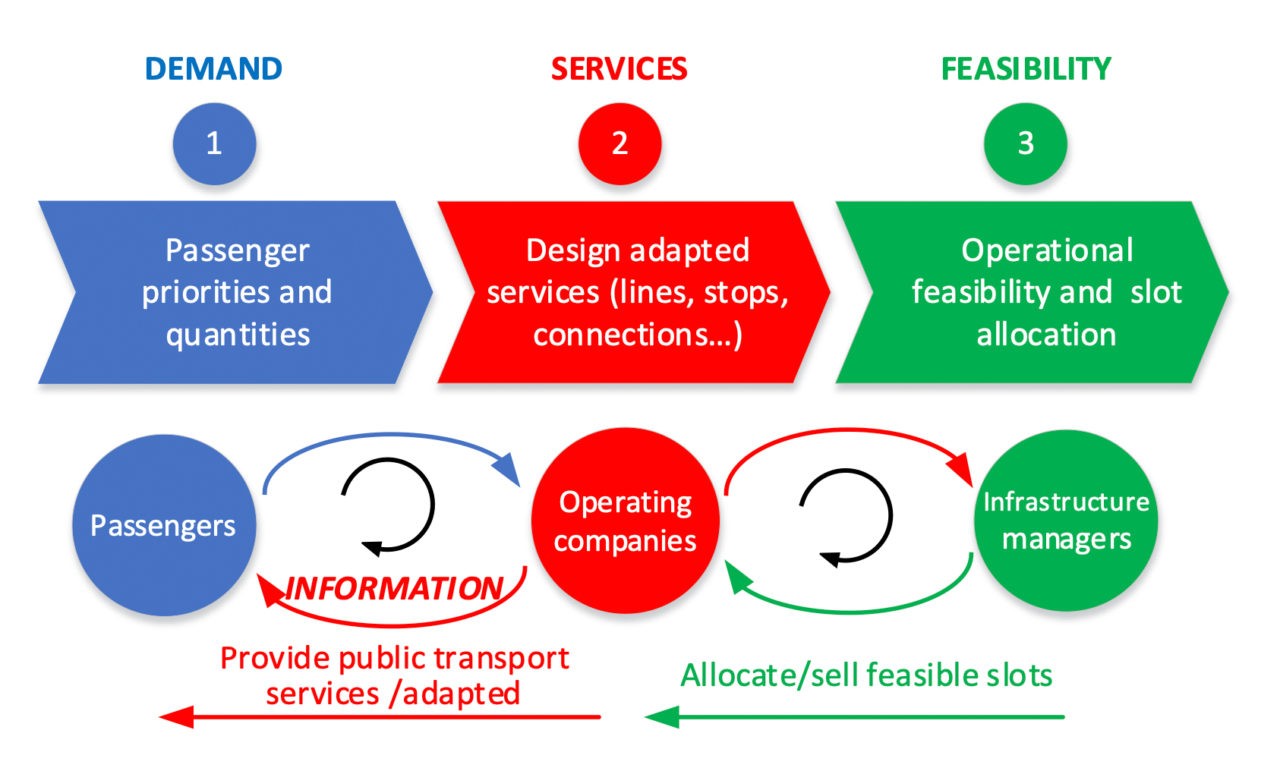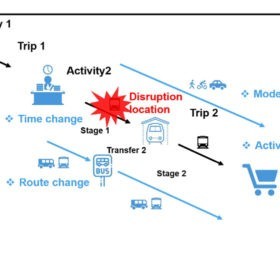
2020
More information and download possibility
During public transport disruptions, the performance of the public transport network is degraded due to unexpected events, resulting in delays and inconvenience for passengers. Therefore, the infrastructure managers and operating companies typically generate a new public transport timetable, called disposition timetable, to reduce passengers’ delays, thereby limiting a negative impact on passengers’ activities and related satisfaction. To generate the new timetable, different rescheduling strategies are considered, such as retiming, rerouting, partial or full cancellation of services, possibly needing to take into account the feasibility of rolling stock circulation.
In this context, disseminating information about the running services is critical. This information is not only the bridge for infrastructure managers and operating companies to provide an updated timetable to passengers, but also the link for them to understand passengers’ behaviours in case of disruptions so that they can reschedule timetable and rolling stock more efficiently to offer passengers better quality services. However, the disseminated information in reality could be incomplete or inaccurate, that is, not all the passengers immediately receive all the information about the disposition timetable. This incompleteness of information could jeopardise the efforts of infrastructure managers and operating companies to improve passengers’ satisfaction.
In this dissertation, we study the effects of information provision to passengers in public transport disruptions, taking into account information availability, quality, passenger heterogeneity, passenger behaviours, disposition timetables and multi-modal transport network. The main contribution of this dissertation is three-fold. First, we propose rigorous mathematical relations to formalise the effects of information availability to passengers in public transport disruptions, including user equilibrium and non- equilibrium solutions. These relations allow simulating and analysing passengers’ behaviours in a multi-modal network using an agent-based micro-simulation model (MATSim). Second, we combine in an innovative manner MATSim with an optimisation model to explore passengers’ satisfaction towards different disposition timetables and information strategies. The results from this integrated model can be helpful for infrastructure managers and operating companies to offer better services to passengers in public transport disruptions. Third, we propose a novel multi-layer time-event-graph method to quantify and identify the effects of incomplete information to passengers’ delays and route feasibility.
